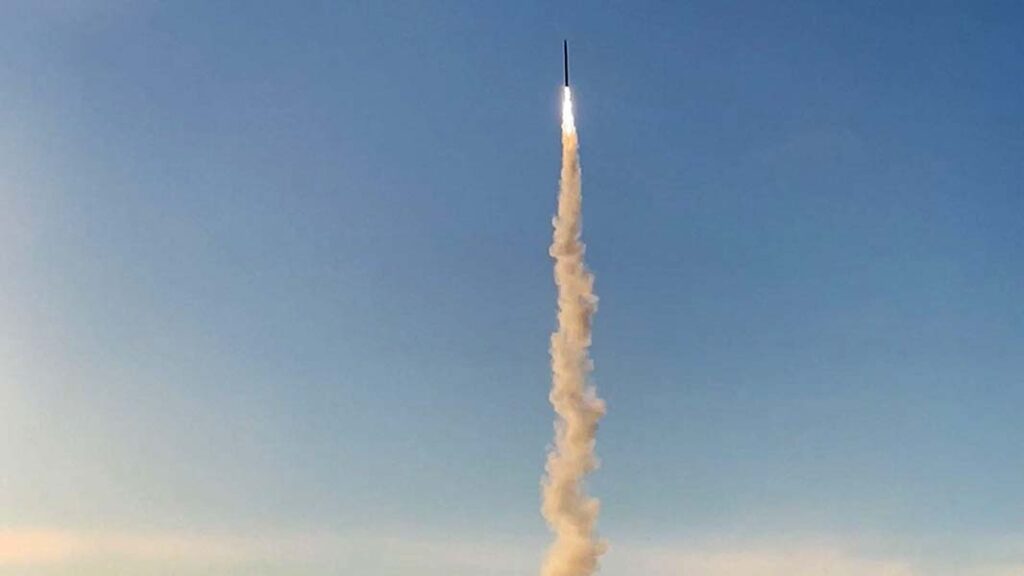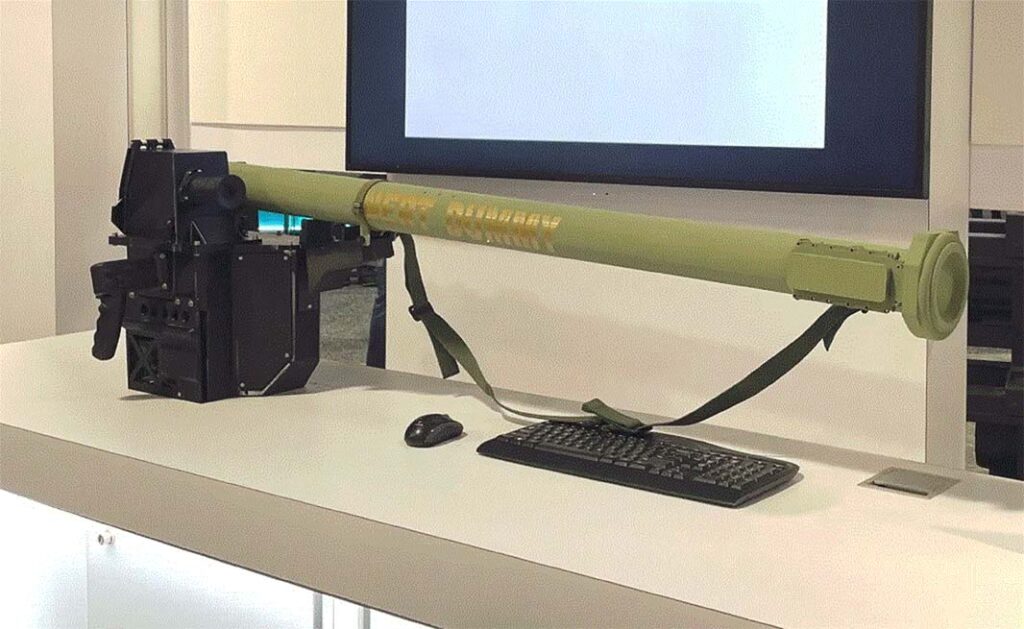Intended to result in a high-performance replacement for the ageing, though still capable FIM-92 Stinger family, the US Army’s Next-Generation Short-Range Interceptor (NGSRI) programme is making steady headway.
For many reasons, not least of which are depleted US Army stocks due to the supply of more than 3,000 of the missiles to Ukraine since Russia invaded in February 2022, added to the fact that Raytheon’s Stinger production is limited to refurbishing old Stingers or upgrading them to new variants rather than producing entirely new-build missiles, Stinger is up for replacement. With evolving aerial battlespace threats, its successor must, itself, be as advanced as possible to meet those threats, effectively, performing well beyond the ageing Stinger’s parameters.
Seeking that replacement since March 2023, when two prime contractors, Lockheed Martin (LM) and Raytheon, (Boeing having dropped out after the 2022 RfP stage) were awarded an ‘other transaction authority’ (OTA) prototyping contract by the US Army to progress competing offerings. The two have since been vying for their respective missile designs to be the winning choice for what will eventually be the US Army’s new short-range air-defence missile component of the Manoeuvre Short-Range Air Defence (M-SHORAD) Increment 3 programme. As such, Stinger’s replacement will be capable of countering a wide range of current and future threats, including manned aircraft, cruise missiles, and various drones.
US Army NGSRI overview
M-SHORAD Increment 1 is currently based on Stryker A1 combat vehicles, (configuration name: Sgt Stout, after a Vietnam War hero), with the Army potentially set to have up to 361 Sgt Stout vehicles no later than FY 2031. Increment 1 vehicles currently have a suite of weapons that, amongst other systems, include eight Stinger interceptors housed within two, four-round Stinger Vehicle Universal Launchers (SVULs); previously they had four Stingers and two AGM-114L Hellfire Longbow missiles, but the latter are being gradually replaced with a second pod of four Stingers. It is the M-SHORAD Increment 3, however, where the new NGSRI comes in, to replace Sgt Stout’s current Stingers, just as soon as the NGSRI programme delivers.

According to the US Government Accountability Office (GAO), the Abbreviated Capabilities Development Document (A-CDD) for NGSRI came from original requirements for Sgt Stout, that set out many of the ‘desired capabilities’ for a Stinger replacement. These include: the new missile having improved target acquisition, range, and lethality to counter evolving aerial threats; the new missile not being heavier than Stinger, allowing it to be used by both vehicle-mounted SVULs and in MANPADS configuration, as well as on a tripod; the NGSRI also being capable of defending a manoeuvre force from latest threats, such as cruise missiles, fixed and rotary-wing aircraft, as well as various types of unmanned aerial vehicles (UAVs).
Army officials, together with the Army Capability Manager, (the user representative who informs further development of NGSRI’s A-CDD), are currently working together on the document. Once formalised Army requirements for NGSRI are finalised, with all input and feedback from ongoing tests and user touchpoints included, these will be set out in a final CDD, which, curiously, is not projected to be completed before early FY 2028. ‘Curiously’ is used because the replacement programme itself is set to last five years, from the 2023 OTA award date, with NGSRI slated to reach low-rate initial production (LRIP) in 2028, once the winner has been selected, in the same year.
It is worth noting that the development budget requested by the army for NGSRI, as of 2025, is USD 373.7 million, and overseeing the NGSRI programme is the US Army’s Programme Executive Office Missiles and Space (PEO MS).
Meanwhile, the first of two primes… Raytheon
Raytheon’s latest NGSRI milestones include its solid-rocket-motor tests, which were announced in June 2025, when, together with Northrop Grumman, four successful tests were conducted of flight-ready, solid rocket motors, fuelled with highly loaded grain (HLG) energetics. The HLG solid propellant provides a longer burn time and greater energy output than a conventional solid rocket motor, increasing acceleration, velocity, and range of the missile beyond those of the legacy Stinger. Of the four tests, three were static firings under different environmental conditions, with the fourth, a successful ballistic flight demonstration, of which further flight tests are planned and ongoing. Working collaboratively at Northrop Grumman’s Allegany Ballistics Laboratory in West Virginia, the two companies have been researching and developing this new extended-range motor design, making the transition from proof of concept to first flight in less than six months.
Raytheon’s President of Land and Air Defence Systems, Tom Laliberty, said that the tests demonstrated the company’s ability to rapidly develop this ‘transformational air defence capability’, able to defeat “a variety of airborne threats at far greater ranges than legacy systems”. For Northrop Grumman, Frank DeMauro, VP and GM, Weapon Systems, said the innovative HLG motor had been developed in five months and delivers “increased speed, range, effectiveness and mission flexibility in a very small package”. Compared with Stinger’s Mach 2.17 speeds, NGSRI is expected to accelerate beyond Mach 3, and intercept targets as far as 9 km away, almost twice the intercept range of Stinger. In addition to the dismounted configuration, Raytheon’s NGSRI is designed to be compatible on platforms such as Sgt Stout using existing SVULs.

The June 2025 tests followed Raytheon’s announcement, mid-February 2025, that ten subsystem demonstrations had taken place over ‘several months’. With each subsystem critical, if Raytheon’s NGSRI was to meet the Army’s overall system performance demands, much was at stake, as one-by-one, the subsystems, including: seeker, rocket motor, command launch assembly (CLA), warhead, tracking, guidance, aerodynamic control, and fuzing, were put through their paces. The man-portable CLA, for example, displayed enhanced target-detection and target-identification ranges under real-world, low-visibility conditions, while the missile’s new rocket motor enabled an extended target intercept range. Also demonstrated, the NGSRI’s new advanced seeker assembly, which enabled a maximum acquisition range far exceeding Stinger, both in the lab and in the field. As for the missile’s warhead assembly, precise and repeatable lethality against a variety of aerial threats, was demonstrated. Laliberty emphasised at the time, that success in the subsystem tests was a crucial step in demonstrating that the company’s NGSRI could meet the US Army’s range and performance requirements for the weapon.
For the latest on Raytheon’s progress, as of mid-August 2025, ESD spoke with the company’s VP for Short- and Medium-Range Ground Based Air Defence, Brenda Ortiz, who began by emphasising the company’s NGSRI programme execution is on schedule to meet the US Army’s initial operational capability (IOC). Of the earlier subsystem demonstrations and rocket motor tests, she said these had taken place “in advance of our system demonstration planned for later this year”.
Ortiz said, Raytheon’s focus is to deliver the Army a best-value, open-system-approach solution, low-risk and highly producible, which meets M-SHORAD performance requirements. “Our design enables backward compatibility with training and DOTMLPF (Doctrine, Organization, Training, Materiel, Leadership and Education, Personnel, Facilities), in order to minimise integration burden for our warfighters and to save costs by leveraging existing Army investments.” She added that its CLA, for example, has demonstrated a significant increase in dismounted performance, enabling the gunner to identify threats sooner for faster engagements.
“Raytheon’s NGSRI provides the Army with a mounted-equivalent capability at a dismounted price,” said Ortiz, adding, “Additionally, our NGSRI design and producibility, results in a significant reduction in touch labour over current Stinger, accelerating schedule and increasing affordability.”
Since the subsystem tech demonstrations, Ortiz confirmed that Raytheon has now successfully completed its second soldier touchpoint exercise. “During this event,” she said, “soldiers and marines evaluated engagement sequences and a deployment demonstration, and then provided positive feedback on Raytheon’s solution. Designing for the warfighter remains at the forefront of our focus, and we are leveraging their valuable feedback to inform our design.” In closing, she confirmed that, “A system flight test demonstration is scheduled for later this year.”

Second prime time… Lockheed Martin
For the latest from the LM camp, ESD spoke with Chris Murphy, LM’s Business Development lead for Integrated Air and Missile Defence Advanced Programmes, about their NGSRI activities and progress with its Quadstar interceptor solution. It was just 18 months after the March 2023 OTA, that LM first showed a model of its Stinger replacement in a MANPADS configuration during the Association of the US Army (AUSA) event in October 2024. Since then, other milestones have been passed and at the end of August 2025, Murphy told ESD that “the company is on schedule with respect to the US Government’s programme plan, having progressed through subsystem qualifications and tests, and is currently working on system and platform integration.”

The Army previously indicated that it expects operational demonstrations of a new interceptor from both primes to take place during FY 2026, with FY 2027 slated as the timeframe for a production decision. Murphy, meanwhile, added that having completed subsystem testing and a majority of the system tests, LM is continuing to conduct some systems integration and a flight-test campaign from August 2025 onwards, as it prepares for the weapon’s development testing phase.
While Quadstar has been developed in response to the US Army NGSRI need, Murphy confirmed, that the design, nevertheless, draws on the company’s related, broader interceptor experience and “leverages recent work in small-diameter missiles”. However, by starting with what he called a ‘clean-sheet’ design, the company has been able to develop a modular concept, use a military standard open systems architecture, incorporate the latest applicable technologies in the interceptor and the weapon’s CLA, and, crucially, drive affordability into the design from the beginning. “The result,” he said, “is an Army-owned product, that not only performs, but can be quickly modified in the future – which is the benefit of modularity and open systems architecture – as the threat evolves, or as relevant technologies mature.”

As for some of the performance stats that differentiate Quadstar from Stinger, Murphy said, Quadstar is able to defeat targets “at significantly greater range than the legacy system (Stinger)”, and both simplifies and enhances the engagement process. Expanding on that, the company has documented the new missile as more effective than Stinger for a number of reasons, including the extended range, as highlighted by Murphy, which is partly down to the missile’s low-drag and highly-manoeuvrable airframe. In addition, its warhead is also larger and delivers greater lethality than Stinger’s 3 kg warhead and is, as a result, suited for use against a wider set of existing and evolving threats than the legacy system was ever designed to address.
Indeed, with NGSRI and its improved capabilities, when introduced into the M-SHORAD ecosystem, it will cover and extend the battlespace currently addressed by Stinger. Murphy said that Quadstar will be effective against aerial targets consistent with the expectations of a SHORAD interceptor; generally, these will include a broad cross section of UAVs, as well as manned rotary- and fixed-wing targets. Indeed, Army representatives have indicated the eventual NGSRI, its improved performance characteristics in terms of range and speed, together with new seeker and warhead technologies, is expected to be effective against 5th-generation UAVs.
That said, the enduring effectiveness of Stinger has been a challenging benchmark to surpass and LM’s Murphy acknowledged this, saying, “the legacy system has been the pre-eminent MANPADS and workhorse for many users for decades. Understanding how the Army fights today, we’re allowing for changes in the way the system may be used in the future, which is both challenging and rewarding. Balancing new technologies and capabilities with the critical need for affordability adds an extra dimension to the challenge.”

Having seemingly met that challenge, LM’s Quadstar missile is worth mentioning in more detail. The all-up-round (AUR), a complete, assembled, and packaged missile ready for deployment to its designated platform in the field, comprises the Quadstar missile, its launch tube/cannister enclosed by front and rear covers, and a shoulder strap for carriage. In its MANPADS/dismounted configuration, the missile-containing tube integrates with the operator’s CLA, the latter comprising front and rear mounting brackets, shoulder pad, eyepiece, and handgrip, and housing the system’s improved optics and computerised targeting system, which uses advances in artificial intelligence (AI) and machine learning, that the company views as a ‘game changer’ in the development of new systems and capabilities, such as Quadstar’s CLA and advanced targeting. An ‘identification friend or foe’ (IFF) antenna enables the operator to distinguish between friendly and enemy aircraft. LM’s CLA has also been designed to support future growth in terms of wider battlefield network integration, beyond line-of-sight capabilities, and solid rocket motor upgrades. The CLA enables the operator to track targets at greater ranges than Stinger and legacy systems, regardless of any environmental clutter, and its advanced camera provides improved target discrimination; the company claims target acquisition and identification ranges have significantly ‘more than’ doubled, while target intercept range by Quadstar is now ‘at least’ double the range of Stinger.
LM’s missile is also compatible with the four-round SVUL, regardless of the weapon-carrying platform. Indeed, beyond its MANPADS configuration, Murphy said, “Any platform, (surface or air), that can carry, or launch, the legacy system can carry, or launch, our NGSRI solution,” adding that as additional platforms emerge, integration of the LM NGSRI “will be expedited by our open systems architecture and modular design”.
Rounding off, Murphy had some thoughts to convey about how the US Army’s methodology has impacted the programme overall. “The Army’s innovative approach towards NGSRI has been spot-on and we feel their communication and support through this phase have been helpful.” He added that the Army had expressed its desire for a better capability to industry, providing certain boundaries, such as using the same launchers the legacy Stinger system uses, then invited the primes to bring solutions to the table. “The Army’s clear statement of ‘the need’, together with associated ‘must haves’, combined with use of an OTA as a contracting vehicle, has provided the flexibility for solid collaboration and rapid advancement of the capability, thereby ensuring our soldiers and marines are provided the best solution possible.”
Footnote: A Stinger in the tail
Even as the NGSRI programme progresses, the FIM-92 Stinger family, nevertheless, remains in widespread use. Globally, there are some 24 users, and refurbishment of existing systems under the US Army’s Stinger Service Life Extension Programme, looks set to extend the weapon’s service life a full ten years, well into the 2030s. At the same time, NATO members, Germany, Italy, and The Netherlands, are set to take delivery of new Stinger family systems over the coming years, following a mid-2024 USD 780 million contract award to RTX’ Raytheon by NATO’s Support and Procurement Agency, NSPA. This deal alone, for some 940 missiles, is set to keep Stinger production (through refurbishment and upgrading of existing models) going to 2030. Germany has already supplied some 500 Stingers to Ukraine during the ongoing war, so the 2024 order will go some way to replenishing stocks.

Stinger has previously been manufactured under license by the European Common Stinger Production Consortium, with Germany’s Dornier (now part of Airbus Defence & Space) as prime contractor, and later with Türkiye’s Roketsan (responsible for the rocket motor) contributing. However, it is understood that this is no longer taking place, with Rocketsan long since offering its Sungur MANPADS class missile. This has been further underscored by the fact that Raytheon signed a memorandum of understanding with Germany’s Diehl “to co-produce key elements of the Stinger missile in Europe”, according to a Diehl press release. However, this agreement is understood to concern Stinger production through refurbishment and upgrade of existing models, rather than new-build production. So while Stinger is likely to remain a VSHORAD mainstay in NATO inventories for some years to come, its end seems to be in sight.
Tim Guest
Author: Tim Guest is a long-time freelance defence journalist, UK Correspondent for ESD, and a former officer in the British Armed Forces.



